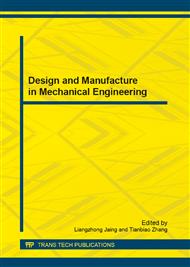p.139
p.144
p.152
p.157
p.163
p.168
p.173
p.179
p.185
Research on Velocity and Inducted Magnetic Field of Conducting Flow in 2D
Abstract:
The purpose of this paper is to present the results of velocity and inducted magnetic field based on thedimensionlessgoverning equations of the incompressible, viscous, instant fluid from equation (1) to equation (6).We assumed a full developed and steady flow so that we can get the exact solutions. Firstly, we considered the situation of low magnetic Reynolds number and inducted magnetic field being ignored. Then secondly, we considered the situation of large magnetic Reynolds number. By comparing these two situations, we found two results: (1). theelectromagnetic force produced by the magnetic field changes the original velocity field a lot (Fig.2 and Fig.3); (2). the inducted magnetic field decreases with the decrease of magnetic Reynolds number. The results also prove that the inducted magnetic field can be ignored when the magnetic Reynolds number is less than or equal to 1 (Fig.5).
Info:
Periodical:
Pages:
163-167
Citation:
Online since:
September 2013
Authors:
Price:
Сopyright:
© 2013 Trans Tech Publications Ltd. All Rights Reserved
Share:
Citation:


